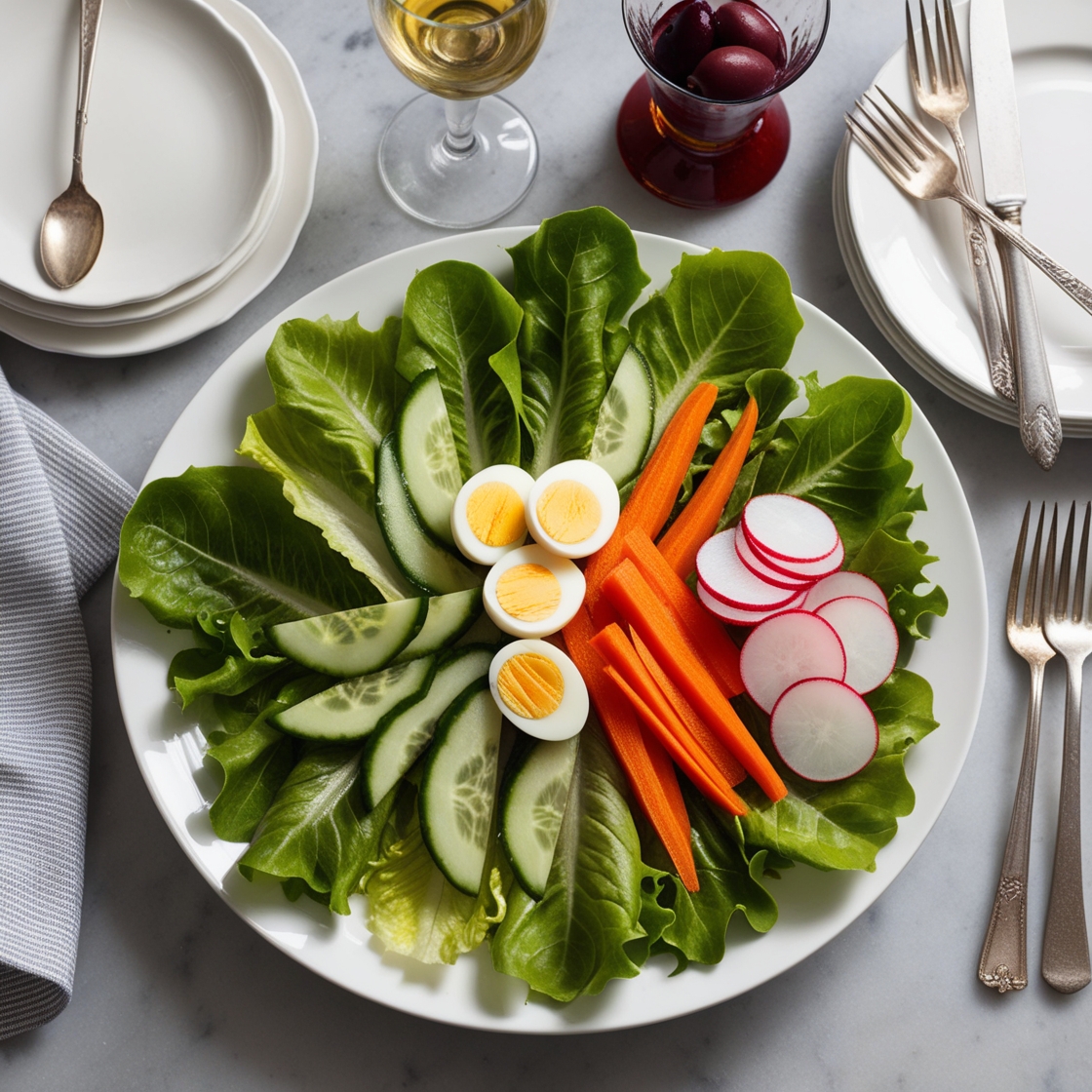The early 20th century brought a unique charm to the culinary world, especially in the art of salad-making. Unlike today’s vibrant, ingredient-rich salads, salads from this period were often simpler, focused on seasonal ingredients, and reflected a blend of European influences that emphasized elegance and taste. For anyone interested in recreating a classic, vintage salad experience, understanding the historical elements can be both delightful and educational. This guide offers a complete overview of crafting an early 20th-century salad, including nutritional insights, traditional ingredients, preparation steps, tips, and answers to common questions.
Nutritional Value of Early 20th Century Salads
Early 20th-century salads were typically light, low in fats, and often centered around fresh vegetables, which made them nutritious yet calorie-conscious. These salads emphasized fiber, vitamins A and C, and essential minerals from vegetables like celery, carrots, and lettuce. However, their simplicity also meant they lacked some of the proteins or healthy fats seen in modern salads, making them ideal for light meals or as a refreshing side dish.
Ingredients for a Classic Early 20th Century Salad
The ingredients in early 20th-century salads varied based on seasonality and availability, with an emphasis on fresh, crisp produce. Common ingredients included:
- Leafy greens: Butter lettuce, romaine, or iceberg lettuce
- Root vegetables: Thinly sliced carrots, radishes, and celery
- Tomatoes: Often used as a garnish, these were diced or quartered
- Cucumbers: Sliced thin, they added a refreshing crunch
- Hard-boiled eggs: Halved or quartered, these provided substance and color
- Olives or pickled vegetables: For a tangy twist
- Dressings: Simple vinaigrettes made from vinegar, lemon juice, olive oil, or a bit of cream or mayonnaise for richer salads

Step-by-Step Preparation
- Prepare the Greens: Rinse the lettuce and dry it thoroughly. In the early 20th century, people valued fresh, crisp leaves, so refrigerate them briefly if needed.
- Slice the Vegetables: Thin slices were the standard, especially for carrots, cucumbers, and radishes. This helped the vegetables blend well without overpowering the palate.
- Assemble the Salad: Arrange the lettuce leaves at the base of a large serving dish, layering with the sliced vegetables. Place the hard-boiled egg halves or quarters strategically for visual appeal.
- Dress the Salad: Classic dressings were minimal. For a vinaigrette, combine vinegar, a touch of olive oil, salt, and pepper. For richer dressings, a light coating of mayonnaise or cream could be gently tossed with the salad.
- Final Touch: Garnish with olives or pickled vegetables for an authentic vintage look and flavor.

Tips for an Authentic Early 20th Century Salad
- Keep it Simple: Avoid overwhelming the salad with too many ingredients. Authenticity lies in simplicity.
- Use Seasonal Produce: Early 20th-century salads were typically made with what was in season, so adjust based on what’s freshest.
- Experiment with Vintage Dressings: Try a basic vinaigrette or mix cream with a hint of mustard for a more traditional dressing.
- Presentation Matters: Arrange the salad with attention to detail, as presentation was valued during this era.
Frequently Asked Questions (FAQs)
Q: Can I add meat to make the salad more filling?
A: While meats like chicken or ham were sometimes added for heartier meals, early 20th-century salads were typically lighter. Feel free to add a small portion for a modern twist.
Q: How do I store leftovers?
A: Salads were meant to be enjoyed fresh, but if you need to store them, keep the dressing separate and refrigerate in an airtight container for up to a day.
Q: What alternative dressings can I use?
A: For an authentic touch, a simple lemon and olive oil dressing or a light cream dressing works best. Avoid complex or overly seasoned dressings for historical accuracy.
Q: How do I make the salad more flavorful?
A: Add a dash of salt, pepper, and vinegar, or even sprinkle fresh herbs like parsley to enhance the flavors without straying from the classic style.
Making a salad in the early 20th-century style is like stepping back in time. The simplicity of ingredients, modest dressings, and emphasis on presentation reflect a culinary tradition focused on freshness and elegance. Whether you’re recreating this vintage dish for a historical gathering or simply to experience a slice of culinary history, the early 20th-century salad offers a refreshing and nutritious option that celebrates the best of simple, wholesome ingredients. Enjoy this classic experience, knowing it’s both a taste and a tradition preserved from the past.

